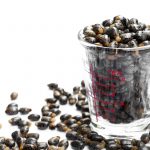Nutraceuticals for Knee OA: Naturopathic Evidence-Based Strategies
DYLAN W. KRUEGER, NMD
Americans work tremendously hard for the vast majority of their lives, often with the idyllic dream of an active and exciting retirement. Unfortunately, many folks reach retirement battered, beaten, and struggling with chronic diseases and pain. Osteoarthritis (OA) of the knee is the most common form of OA and adversely affects 19% of Americans over the age of 45.1 Conventional treatment strategies broadly focus on palliative pharmaceutical anti-inflammatory interventions, such as oral nonsteroidal anti-inflammatory drugs (NSAIDs) and corticosteroid injections. While these modalities provide effective short-term relief, they have dwindling long-term effects and multiple side-effects.
Geriatric patients commonly suffer from comorbidities and polypharmacy, so identifying and implementing treatment strategies that do not further burden their internal organs is of great importance. Naturopathic physicians are uniquely qualified to provide solutions to this growing issue given their extensive background in botanical and nutritional medicine in addition to their pharmaceutical knowledge. Geriatric patients are distinctly different than other patient populations in that they are often taking multiple prescription medications, are likely on a fixed income, and may have restrictions in their ability to swallow many supplements. Physicians must be cognizant of these factors as they formulate the best treatment plan for their patients.
The following are important considerations when selecting therapeutics for geriatric patients:
- Supplement/medication interactions
- Supplement form (eg, capsule, tablet, powder, etc)
- Quantity of supplements
- Cost-effectiveness
- Therapeutic synergy of combination supplements
Due to these factors, I propose that naturopathic physicians focus on utilizing the most evidence-based nutraceuticals available and minimize less substantiated therapies. The following 3 interventions should be regarded as first-line treatments that lay the foundation for the future naturopathic standardization of care for knee OA.

Best Evidence-Based Therapies
Boswellia
Boswellia serrata is a very beneficial and potent anti-inflammatory extract that has flown under the radar compared to more trendy supplements such as cannabidiol (CBD) oil and collagen powders. Also commonly known as Indian frankincense, Boswellia is a gum resin extract from trees in India and the Arabian Peninsula.2 The botanical has been around for many centuries in Ayurvedic medicine and was known to treat various ailments, particularly inflammatory conditions. Recently, with the emergence of numerous studies – including randomized, double-blind, placebo-controlled trials – Boswellia has attracted more attention for its anti-inflammatory effects and other benefits, particularly as they relate to OA.3
Mechanism of action:
- Blocks the synthesis of proinflammatory 5-lipoxygenase (5-LOX)4
- Decreases leukocytes into the knee joint5
- Suppresses NF-κB activation and reduces inflammatory cytokines, including TNFα, IL-1, IL-2, IL-4, IL-6 and IFN-γ5
- Decreases metalloproteinases (MMPs) and adhesion molecules like intercellular adhesion molecule-1 (ICAM-1)6
- Preserves cartilage and cumulatively decreases inflammation in the joint6
Dosing: 400 mg 3 times per day7
Benefits:
- Significant reductions in knee pain3,8,9
- Increased flexion of the joint3,8
- Increased walking distance8
- Reduced knee swelling8
- Increased joint functionality3,9
- Increased joint spacing on radiograph (120-day follow-up)3
- Decreased bone spurring on radiograph (120-day follow-up)3
- Decreased pain, increased functionality, and increased physical performance when combined with curcumin on WOMAC assessment (is superior to curcumin monotherapy)10
Curcumin
Extracted from the plant Curcuma longa (aka the common spice turmeric), curcumin has steadily gained usage in the supplement form and continues to be studied globally. Curcuminoids are the medicinally relevant component of turmeric and are believed to be primarily responsible for its therapeutic effects. Turmeric has been used in Ayurvedic and Chinese medicine for over 1000 years, especially in South- and Southeast Asian countries such as India and China. Recent focus has delved into the root’s anti-inflammatory benefits, especially for chronic inflammatory conditions.2
Mechanism of action:
- Inhibits both cyclooxygenase (COX)-1 and 22,11
- Suppresses NF-kB2
- Inhibits expression of key MMPs in cartilage12
- Inhibits TNFα-induced signaling12
Dosing: 500 mg 3-4 times per day of bioavailable curcumin
Curcumin has low absorption and therefore should be paired with other substances such as phosphatidylcholine to achieve maximal effectiveness12
Benefits:
- Protects against cartilage degeneration12-14
- Modulates inflammation via its anti-inflammatory effects12-17
- Reduces pain, improves function, and reduces stiffness better than acetaminophen in patients with knee OA on WOMAC assessment13
- Has comparable pain-reducing effect as ibuprofen; however, curcumin produces higher patient satisfaction scores and better timed-walk- and stair-climbing scores13,16
- Has superior safety profile compared to ibuprofen13,16
- Reduces knee pain in OA patients13,15-17
- Produces similar pain relief as other NSAIDs on visual analog pain assessment13,16
Maritime Pine Bark Extract
French maritime pine bark extract, also known as pycnogenol, is another very interesting supplement for knee osteoarthritis. It has been used since ancient times2 yet is largely undervalued, even in the naturopathic community. The maritime pine bark extract has various health benefits, including in OA, for which it is lesser known and utilized. Multiple studies, however, have demonstrated its therapeutic and clinically relevant benefits in knee OA.
Mechanism of action:
- Inhibits proinflammatory mediators in keratinocytes, leukocytes, and endothelial cells18
- Inhibits the release of tissue-destroying enzymes (MMPs) collagenase, elastase, and gelatinase from inflammatory cells2,18
- Inhibits both COX-1 and 218
- Inhibits TNFα2
- Inhibits NF-kB activation2
- Diminishes free radicals (has 50-100 times the potency of vitamin E)2
Dosing: 150 mg once per day19,20
Benefits:
- Decreases inflammation in the knee joint21,22
- Reduces knee pain in OA patients19,20,23
- Reduces knee stiffness3,4
- Increases the distance patients are able to walk23
- Decreases the number of pharmaceutical medications taken by patients23
- Reduces peripheral edema in feet by 79%23
- Reduces C-reactive protein by 67% in patients with baseline elevations21
- Reduces plasma free radicals by 70% in patients with baseline elevations20
- Facilitates increases in overall physical activity3,4
- Protects against cartilage degeneration22
Other Considerations of Note
The following nutraceutical supplements may also provide therapeutic value in osteoarthritis, but are either lacking further substantiated clinical trials or have mixed findings:
- Niacinamide24
- Chondroitin sulfate25,26
- Glucosamine sulfate25,26
- Ginger27,28
- Devil’s claw extract5,26,29
Caution: CBD
Cannabidiol, more commonly known as CBD, is a very popular and trendy constituent of the Cannabis plant and has a long history of use in herbal medicine and recreational self-prescribing medicine. Unlike THC in Cannabis, CBD does not induce psychotropic mental effects. Although the effects of cannabinoids have long been grouped together, modern science, education, and availability has now effectively separated the 2 distinct constituents from each other, as well as from the various other parts of the Cannabis plant. Over the past decade, CBD has become mainstream in America with increased approval of medical and recreational marijuana. Many people know friends or family members that have tried CBD at some point in time. CBD’s ubiquitous and enticing marketing has enabled many people, especially older individuals, to pursue it as a medicinal. Unfortunately, its applications in modern evidence-based medicine have not caught up with its immense popularity. Currently, there are no published human trials examining CBD for OA. Additionally, CBD is generally much more expensive than the aforementioned nutraceuticals and is plagued by poor quality.30 This is not to say CBD is useless, and there are some emerging animal studies with documented benefits that may translate into further human trials in the years to come.
Potential benefits:
- Reduces OA pain in dog and rodent models31,33
- Anti-inflammatory31
- Demonstrates analgesic pain reduction in animal models31
- Has anti-arthritic effect in rodent animal models31,32
- Increases activity in dogs with OA31,33
Summary
When evaluating and treating geriatric patients with knee osteoarthritis pain, we want to initiate a treatment approach that is safe, evidence-based, effectively reduces pain, and increases functionality in daily living activities. Prescriptions of many large and hard-to-swallow capsules and tablets should be minimized whenever possible to ensure greater geriatric patient safety and compliance. The approach should also mitigate any potential side-effects, drug-to-drug interactions and drug-to-herb interactions. Physicians should be acutely aware of the greater likelihood of fixed incomes among the older individuals, and distill their treatment approach down to the most effective options available.
Historically, there have been many herbs and vitamins utilized for OA. One of the appeals of naturopathic medicine is the numerous outside-the-box therapies available and the various eclectic approaches utilized within the profession. Naturopathic physicians have enjoyed complete autonomy in this regard as they establish individualized care to meet specific patients’ needs. The downside of such enormous discretion is inconsistent care, ineffective treatments, excess patient costs, and patient frustration. These negative outcomes can potentially hinder the profession as a whole, slow licensure expansion, and create skepticism among potential patients who could substantially benefit from the high-level care we can provide them.
Fortunately, there are numerous therapeutic options that provide excellent results and avoid the common drawbacks just mentioned. Clinicians can achieve success, consistent results, and patient satisfaction by focusing on Boswellia, curcumin, and French maritime pine bark extract as first-line nutraceutical treatments for knee OA. These 3 options have established efficacy in multiple randomized, controlled trials, work safely and synergistically together, and provide an alternative to long-term NSAID use in OA patients. Precise nutraceutical supplementation in conjunction with lifestyle and dietary modifications (such as the Mediterranean diet) provide naturopathic physicians a foundation of care that can withstand modern scientific rigor while simultaneously improving patients’ lives.
References
- Wallace IJ, Worthington S, Felson DT, et al. Knee osteoarthritis has doubled in prevalence since the mid-20th century. Proc Natl Acad Sci U S A. 2017;114(35):9332-9336.
- Maroon JC, Bost JW, Maroon A. Natural anti-inflammatory agents for pain relief. Surg Neurol Int. 2010;1:80.
- Majeed M, Majeed S, Narayanan NK, Nagabhushanam K. A pilot, randomized, double-blind, placebo-controlled trial to assess the safety and efficacy of a novel Boswellia serrata extract in the management of osteoarthritis of the knee. Phytother Res. 2019;33(5):1457-1468.
- No authors listed. Boswellia serrata. Altern Med Rev. 2008;13(2):165-167.
- Dragos D, Gilca M, Gaman L, et al. Phytomedicine in Joint Disorders. Nutrients. 2017;9(1):70.
- Sengupta K, Krishnaraju AV, Vishal AA, et al. Comparative efficacy and tolerability of 5-Loxin and Aflapin against osteoarthritis of the knee: a double blind, randomized, placebo controlled clinical study. Int J Med Sci. 2010;7(6):366-377.
- Murray MT. Chapter 202: Osteoarthritis. In: Pizzorno JE, Murray MT, eds. Textbook of Natural Medicine. 4th Edition. St Louis, MO: Elsevier; 2013.
- Kimmatkar N, Thawani V, Hingorani L, Khiyani R. Efficacy and tolerability of Boswellia serrata extract in treatment of osteoarthritis of knee–a randomized double blind placebo controlled trial. Phytomedicine. 2003;10(1):3-7.
- Aghamohammadi D, Dolatkhah N, Bakhtiari F, et al. Nutraceutical supplements in management of pain and disability in osteoarthritis: a systematic review and meta-analysis of randomized clinical trials. Sci Rep. 2020;10(1):20892.
- Haroyan A, Mukuchyan V, Mkrtchyan N, et al. Efficacy and safety of curcumin and its combination with boswellic acid in osteoarthritis: a comparative, randomized, double-blind, placebo-controlled study. BMC Complement Altern Med. 2018;18(1):7.
- Mohan M, Hussain MA, Khan FA, Anindya R. Symmetrical and un-symmetrical curcumin analogues as selective COX-1 and COX-2 inhibitor. Eur J Pharm Sci. 2021;160:105743.
- Green JA, Hirst-Jones KL, Davidson RK, et al. The potential for dietary factors to prevent or treat osteoarthritis. Proc Nutr Soc. 2014;73(2):278-288.
- Grover AK, Samson SE. Benefits of antioxidant supplements for knee osteoarthritis: rationale and reality. Nutr J. 2016;15:1.
- Shakibaei M, John T, Schulze-Tanzil G, et al. Suppression of NF-kappaB activation by curcumin leads to inhibition of expression of cyclo-oxygenase-2 and matrix metalloproteinase-9 in human articular chondrocytes: Implications for the treatment of osteoarthritis. Biochem Pharmacol. 2007;73(9):1434-1445.
- Burnett P. Can a turmeric extract relieve arthritic pain as well as acetaminophen? Natural Medicine Journal. 2021;13(6). Available at: https://www.naturalmedicinejournal.com/journal/2021-06/can-turmeric-extract-relieve-arthritic-pain-well-acetaminophen. Accessed July 17, 2021.
- Perkins K, Sahy W, Beckett RD. Efficacy of curcuma for treatment of osteoarthritis. J Evid Based Complementary Altern Med. 2017;22(1):156-165.
- Sterzi S, Giordani L, Morrone M, et al. The efficacy and safety of a combination of glucosamine hydrochloride, chondroitin sulfate and bio-curcumin with exercise in the treatment of knee osteoarthritis: a randomized, double-blind, placebo-controlled study. Eur J Phys Rehabil Med. 2016;52(3):321-330.
- Iravani S, Zolfaghari B. Pharmaceutical and nutraceutical effects of Pinus pinaster bark extract. Res Pharm Sci. 2011;6(1):1-11.
- Farid R, Mirfeizi Z, Mirheidari M, et al. Pycnogenol supplementation reduces pain and stiffness and improves physical function in adults with knee osteoarthritis. Nutr Res. 2007;27(11):692-697.
- Cisár P, Jány R, Waczulíková I, et al. Effect of pine bark extract (Pycnogenol) on symptoms of knee osteoarthritis. Phytother Res. 2008;22(8):1087-1092.
- Belcaro G, Cesarone MR, Errichi S, et al. Variations in C-reactive protein, plasma free radicals and fibrinogen values in patients with osteoarthritis treated with Pycnogenol. Redox Rep. 2008;13(6):271-276.
- Jessberger S, Högger P, Genest F, et al. Cellular pharmacodynamic effects of Pycnogenol® in patients with severe osteoarthritis: a randomized controlled pilot study. BMC Complement Altern Med. 2017;17(1):537.
- Belcaro G, Cesarone MR, Errichi S, et al. Treatment of osteoarthritis with Pycnogenol. The SVOS (San valentino osteo-arthrosis study). Evaluation of signs, symptoms, physical performance and vascular aspects. Phytother Res. 2008;22(4):518-523.
- Jonas WB, Rapoza CP, Blair WF. The effect of niacinamide on osteoarthritis: a pilot study. Inflamm Res. 1996;45(7):330-334.
- Liu X, Machado GC, Eyles JP, et al. Dietary supplements for treating osteoarthritis: a systematic review and meta-analysis. Br J Sports Med. 2018;52(3):167-175.
- Gregory PJ, Sperry M, Wilson AF. Dietary supplements for osteoarthritis. Am Fam Physician. 2008;77(2):177-184.
- Rondanelli M, Fossari F, Vecchio V, et al. Clinical trials on pain lowering effect of ginger: A narrative review. Phytother Res. 2020;34(11):2843-2856.
- Ahmadabadi HK, Vaez-Mahdavi MR, Kamalinejad M, et al. Pharmacological and biochemical properties of Zingiber zerumbet (L.) Roscoe ex Sm. and its therapeutic efficacy on osteoarthritis of knee. J Family Med Prim Care. 2019;8(12):3798-3807.
- Ameye LG, Chee WS. Osteoarthritis and nutrition. From nutraceuticals to functional foods: a systematic review of the scientific evidence. Arthritis Res Ther. 2006;8(4):R127.
- Hazekamp A. The trouble with cbd oil. Med Cannabis Cannabinoids. 2018;1(1):65-72.
- Mlost J, Bryk M, Starowicz K. Cannabidiol for pain treatment: focus on pharmacology and mechanism of action. Int J Mol Sci. 2020;21(22):8870.
- Malfait AM, Gallily R, Sumariwalla PF, et al. The nonpsychoactive cannabis constituent cannabidiol is an oral anti-arthritic therapeutic in murine collagen-induced arthritis. Proc Natl Acad Sci U S A. 2000;97(17):9561-9566.
- Gamble LJ, Boesch JM, Frye CW, et al. Pharmacokinetics, safety, and clinical efficacy of cannabidiol treatment in osteoarthritic dogs. Front Vet Sci. 2018;5:165.

Dylan W. Krueger, NMD double–majored in biology and psychology at the University of North Dakota and graduated with honors before receiving his doctorate in Naturopathic Medicine from Southwest College of Naturopathic Medicine in Tempe, AZ. He soon combined his interests in orthopedic regenerative medicine and pain management with his dream of being an entrepreneur, to form Atlas Health Medical Group, in Gilbert, AZ. Dr Krueger’s private practice focuses on identifying, understanding, listening, and treating the underlying causes of symptoms and pain with minimal use of pharmaceutical care.










